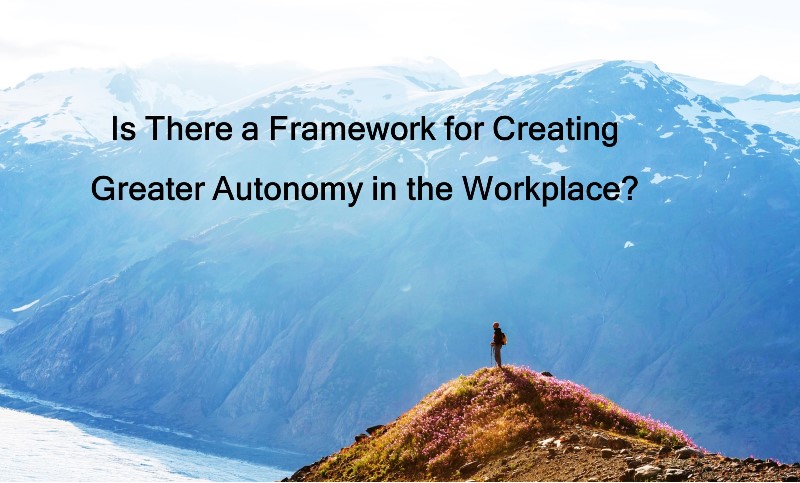How do people advance through the changing structure of a Lean or Agile Organization?
Is There a Framework for Creating Greater Autonomy in the Workplace?
In the Lean world, we use the processes of Training within Industry and the Toyota Kata to move from a strict hierarchal structure to more distributed culture. It reminds me of the Zen Mountain Story told to me by Michale Balle, co-author of The Lean Strategy.
Zen Mountain Story: I asked Michael, “How do you relate the tools and the thinking processes of lean?”
Michael responded: “I don’t know if you know this Zen story: when you haven’t studied Zen, you see the mountain as a mountain. Then if you really study Zen very hard, then you no longer see the mountain as a mountain. But when you understand Zen, you see the mountain as a mountain. I feel the same thing about the tools.
When you first study lean, you start with the tools. Then you study it more, and you get into something that is about thinking, or philosophy, or whatever. But when you do it a lot, you forget about the tools. I think the tools are essentially very important. However, I have a different take on what the tools mean.
The way I see lean as a management system is essentially a knowledge transfer system; it’s a training system. So what the tools are, the tools to me are self-study exercises to understand your processes better, it’s like a microscope or a telescope. The tool is a way to look into problems, and they never solve problems by themselves.
Many people have used the tools or have wanted to implement some sort of solutions to these tools thinking it would make them better. I think that’s kind of beside the point. What makes you better is using the tools rigorously, so you understand your problems and your own processes. And then, with hard work, take the time to figure out how to solve them. It’s this process; it’s the process of solving your own problem that empowers you and which leads you to create better and more performing processes.”
I use the Zen mountain story because it clearly resembles on how people envision moving from the typical organization structure to the more distributed networks of today. However, painting that clear picture to the progression of the change we require in workers and supervisors is lacking. Having some sort of learning program, curriculum to move from a hierarchical organization structure to one of a distributed network has alluded me. It was like it was just supposed to happen.
In reading the book, Differentiation for Gifted Learners, I came across Richard Cash’s diagram on how to increase student involvement in learning. His diagram creates a natural flow for creating greater learning autonomy. Or as the authors say, “Learning autonomy is defined as the desire to learn without being persuaded to learn.”
Their model is divided into 4 phases and I have paraphrased the steps below into a workforce type description versus the student:
- Didactic. The organization/supervisor sets clear goals, plans and develops job descriptions and evaluations. Workers have choices within their activities but are mainly directed in their tasks. Training is skilled based.
- Facilitated: Workers gain experience and job skills. The supervisor is still responsible for the before mentioned, but the worker has more input and assumes a greater role in their task direction. Training is still skilled base, but opportunities for developing communication and people skills are introduced.
- Coached: In Lean, this is the introduction Kata where coaches observe workers at work and provide feedback to enhance performance or proficiency. The Supervisor/Coach act as a guide to higher levels of thinking, communicating, data collection, and group collaboration. The primary goal of this step is to build a greater sense of ownership and autonomy in their work.
- Consultive: Supervisors/Coaches allow workers to not only to plan their course of action but assume primary responsibility for the goal. The workers also provide their own critical reflection on performance and processes used.
This may seem straightforward to many, but I seldom see the steps so clearly defined. It is more or less accepted that we can get there through the deliberate practice of Kata, for example. I think the most eye-opening part of this exercise for me was not the understanding from the worker perspective but from the supervisor’s view. Especially the role of middle-management and how their views must change within a Lean or Agile organization.
Richard Cash has a past blog post that offers further study of this idea that I recommend reading: https://freespiritpublishingblog.com/2014/04/23/cash-in-on-learning-whats-so-different-about-differentiation-for-the-gifted/
The Lean Strategy Amazon book link: http://amzn.to/2D4E4ft
Differentiation for Gifted Learners Amazon book link: http://amzn.to/2B41tM7



